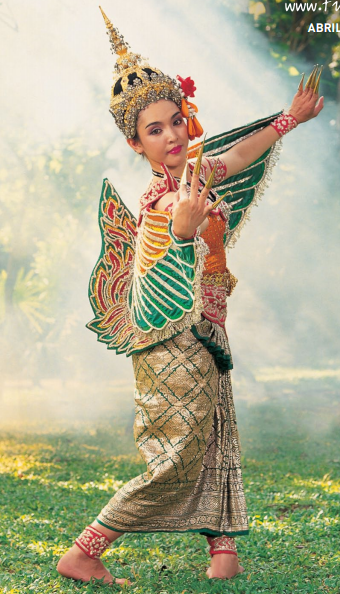Music
During the Ayutthaya period the instrumental ensemble was composed of four to eight musicians. Songs became much longer and singing technique was improved. Many Ayutthaya songs were composed in a form of musical suite called Phleng Rua, which was a series of songs. Poets contributed lyrics in the form of short stories, mostly from the Tamakien. Many Ayutthaya songs are still employed in Thai plays today.
 In the beginning of the Bangkokera, after a long period of war, there was a remarkable revival of Thai arts, especially music and drama. The size of the instrumental ensemble was enlarged to twelve musicians and several masterpieces of Thai literature were produced as theatrical performances accompanied by music. Beautiful lyrics written by contemporary poets were fitted into melodies of the Ayutthaya period.
In the beginning of the Bangkokera, after a long period of war, there was a remarkable revival of Thai arts, especially music and drama. The size of the instrumental ensemble was enlarged to twelve musicians and several masterpieces of Thai literature were produced as theatrical performances accompanied by music. Beautiful lyrics written by contemporary poets were fitted into melodies of the Ayutthaya period.
To save the national music from extinction, modern Thai musicians are trying to devise a system in which this traditional music can be rendered into Western notation and later edited. According to a book written by Sir Hubert Perry, entitled Evolution of the Art of Music, “The Thai scale system is … extraordinary. It is not now pentatonic, though supposed to be derived originally from the Javanese system. The scale consists of seven notes which should by right be exactly equidistant from one another; that is, each step is a little less than a semitone and three-quarters. So that they have neither a perfect fourth nor a true fifth in their system, and both their thirds and sixths are between major and minor, and not a single note between a starting note and its octave agrees with any of the notes of the European scale…. Their sense of the right relations of the notes of the scale are so highly developed that their musicians can tell by ear directly a note which is not true to their singular theory. Moreover, with this scale, they have developed a kind of musical art in the highest degree complicated and extensive.”
In all, there are about fifty types of Thai musical instruments, including many local versions of flutes, stringed instruments, and gongs used for all kinds of occasions: festivals, folk theatre, marriages, funerals, and social evenings after harvestings.
During the last decade of the 20th Century, Thailand has witnessed the flourish of Western music as never before, and this development will surely continue well into the 21st Century.
Music education in Thailand is managed by the ministry of Education and the Ministry of University Affairs in terms of curriculum content. Western music classes, both practical and theoretical have been integrated into the school curriculum in Thailand in these past three decades in every elementary school, high school and college level.
There has been a huge development in music education at the higher education level. Government organizations and universities have opened music schools and music faculties, starting with the School of Fine Arts which belongs to the Fine Arts Department (opened in 1934), followed by Chulalongkorn University, Payap University, Srinakarinwiroj Prasarnmit University, Kasetsart University, Mahidol University, Silapakorn University, Khon Kaen University, etc.


